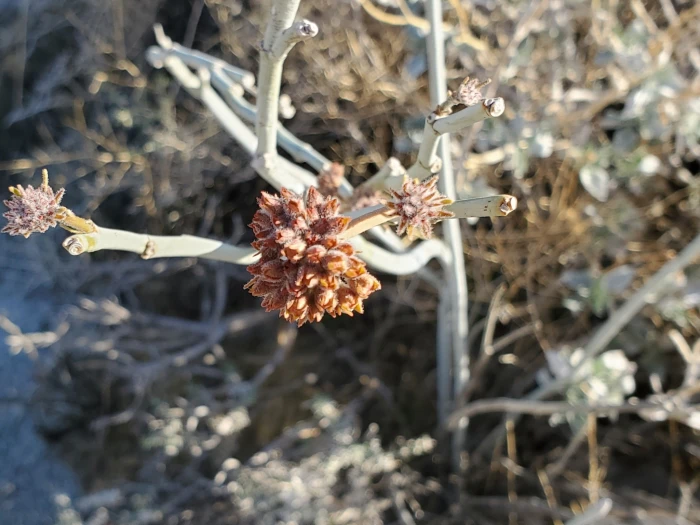Whitestem Milkweed
(Asclepias albicans)
Whitestem Milkweed (Asclepias albicans)
/
/

Bob Miller
CC BY 4.0
Image By:
Bob Miller
Recorded By:
Copyright:
CC BY 4.0
Copyright Notice:
Photo by: Bob Miller | License Type: CC BY 4.0 | License URL: http://creativecommons.org/licenses/by/4.0/ | Rights Holder: Bob Miller | Publisher: iNaturalist | Date Created: 2021-02-21T08:06:03-08:00 |




















































Estimated Native Range
Climate Requirements for Hachiōji, Japan
| This Plant | Your Site | Plant Suitability for Your Location | ||
|---|---|---|---|---|
| • Precipitation | 2" - 34" | 59" | Aquatic | Aquatic |
| • High Temp. | 76°F - 110°F | 86°F | Your summer temperatures are normal for this plant. | Excellent |
| • Low Temp. | 22°F - 54°F | 29°F | Your winter temperatures are normal for this plant | Excellent |
This plant may not grow well at your location - your precipitation is too high.
Summary
Asclepias albicans, commonly known as Whitestem Milkweed, is a deciduous subshrub or shrub native to the arid desert regions of the Southwestern United States and Northwest Mexico. This species thrives in sandy or rocky soils, often in washes and on slopes, where it is adapted to the extreme heat and drought conditions of its native habitat. It typically grows 1 to 3 meters tall, occasionally reaching up to 4 meters. The plant’s branches are slender and stick-like, with younger growth covered in a waxy substance and fine woolly hairs, which help reflect sunlight and conserve water.
Whitestem Milkweed is characterized by its sparse foliage and unique inflorescences, which consist of small, purple-tinged greenish flowers. These flowers have a distinctive structure with bulbous hoods and reflexed corollas. Although it can flower in various seasons, it usually does not bloom in the summer. The fruit is a conspicuous, elongated follicle that hangs in clusters, adding to the plant’s ornamental value. In cultivation, Whitestem Milkweed is valued for its drought tolerance and unique appearance, making it suitable for xeriscaping and desert gardens. It requires full sun exposure and well-drained soils. While it is generally low-maintenance, it can be susceptible to root rot if overwatered.CC BY-SA 4.0
Whitestem Milkweed is characterized by its sparse foliage and unique inflorescences, which consist of small, purple-tinged greenish flowers. These flowers have a distinctive structure with bulbous hoods and reflexed corollas. Although it can flower in various seasons, it usually does not bloom in the summer. The fruit is a conspicuous, elongated follicle that hangs in clusters, adding to the plant’s ornamental value. In cultivation, Whitestem Milkweed is valued for its drought tolerance and unique appearance, making it suitable for xeriscaping and desert gardens. It requires full sun exposure and well-drained soils. While it is generally low-maintenance, it can be susceptible to root rot if overwatered.CC BY-SA 4.0
Plant Description
- Plant Type: Subshrub, Shrub
- Height: 6-9 feet
- Width: 0.5-1.5 feet
- Growth Rate: Moderate
- Flower Color: White
- Flowering Season: Spring, Summer, Fall
- Leaf Retention: Deciduous
Growth Requirements
- Sun: Full Sun
- Water: Low
- Drainage: Fast
Common Uses
Bee Garden, Bird Garden, Butterfly Garden, Deer Resistant, Drought Tolerant, Fragrant, Hummingbird Garden, Low Maintenance, Rock Garden
Natural Habitat
Arid desert regions, often in washes and on slopes
Other Names
Common Names: Wax Milkweed
Scientific Names: Asclepias albicans
GBIF Accepted Name: Asclepias albicans S.Watson